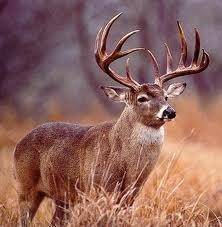Officials with the Division of Wildlife Resources are concerned about cold temperatures and how those temperatures might affect deer if the weather doesn’t warm up soon.
Watching the deer herds
В
Since the start of December, DWR biologists have been monitoring deer herds across Utah. В The following are the five factors biologists monitor to determine how well the deer are doing:
В
• The condition of the deer as they entered the winter
• The amount of food that’s available to the deer on winter ranges
• How deep the snow is
• How cold the temperature is
• The amount of body fat they find on deer that have been killed along roads.
В
Deer in good shape
В
Anis Aoude, big game coordinator for the DWR, says one of the five factors—the temperature—has reached a critical point in some areas in Utah.
Despite the cold temperatures, Aoude says Utah’s deer herds are doing well.
“Fortunately,” he says, “deer went into the winter with an average layer of fat on them.  And the snow depth in most of the state is not covering the vegetation.  Slopes that face south are nearly bare in some areas, so the deer can still find food.”
If conditions deteriorate, biologists will consider feeding deer specially designed pellets.
The pellets are formulated to fit the complex digestive system mule deer have. В The pellets are also designed to give deer extra energy. В Extra energy is something deer often need when the temperature is cold and the snow is deep.
If the need arises, the DWR is ready to purchase pellets and feed deer.
Aoude says DWR biologists will continue to monitor the deer herds closely.  “If feeding becomes necessary,” he says, “we’ll make sure it’s done at the right time and with the right type of food.”
В
How you can help
В
To help them get through the winter, deer put weight on throughout the spring, summer and fall.
Anytime a deer is disturbed, it has to burn some of its precious fat reserves to try to escape the threat.
With that in mind, not disturbing deer is one of the best things you can do to help deer in the winter:
В
• When you’re in the backcountry, keep your dog on a leash.  Don’t let your dog harass deer.
• If you encounter deer while hiking, skiing or snowmobiling, give the animals plenty of space, and remain as quiet as you can.
• SLOW DOWN while driving through areas where deer live.  It’s especially important to drive slowly at dawn and dusk, when deer are most active.
• Pay attention to wildlife crossing signs.
• Watch for movement along the side of the road.  If you spot one deer, there’s a
good chance other deer are with it.
A new website—www.watchfordeerutah.com—provides more information about deer behavior and how to drive safely in deer country.
Contact: Mark Hadley, DWR Relations with the Public Specialist 801-538-4737
В

